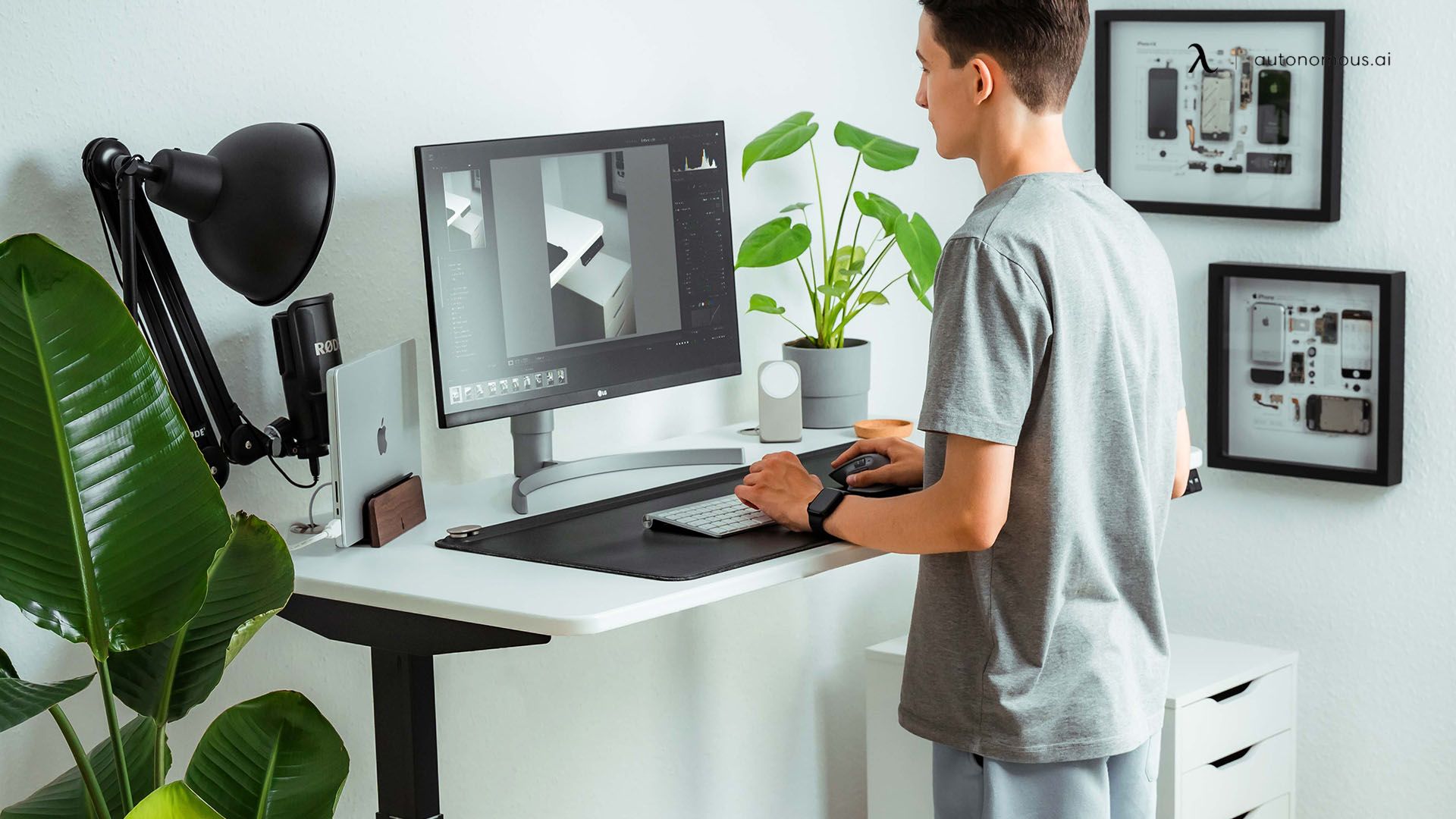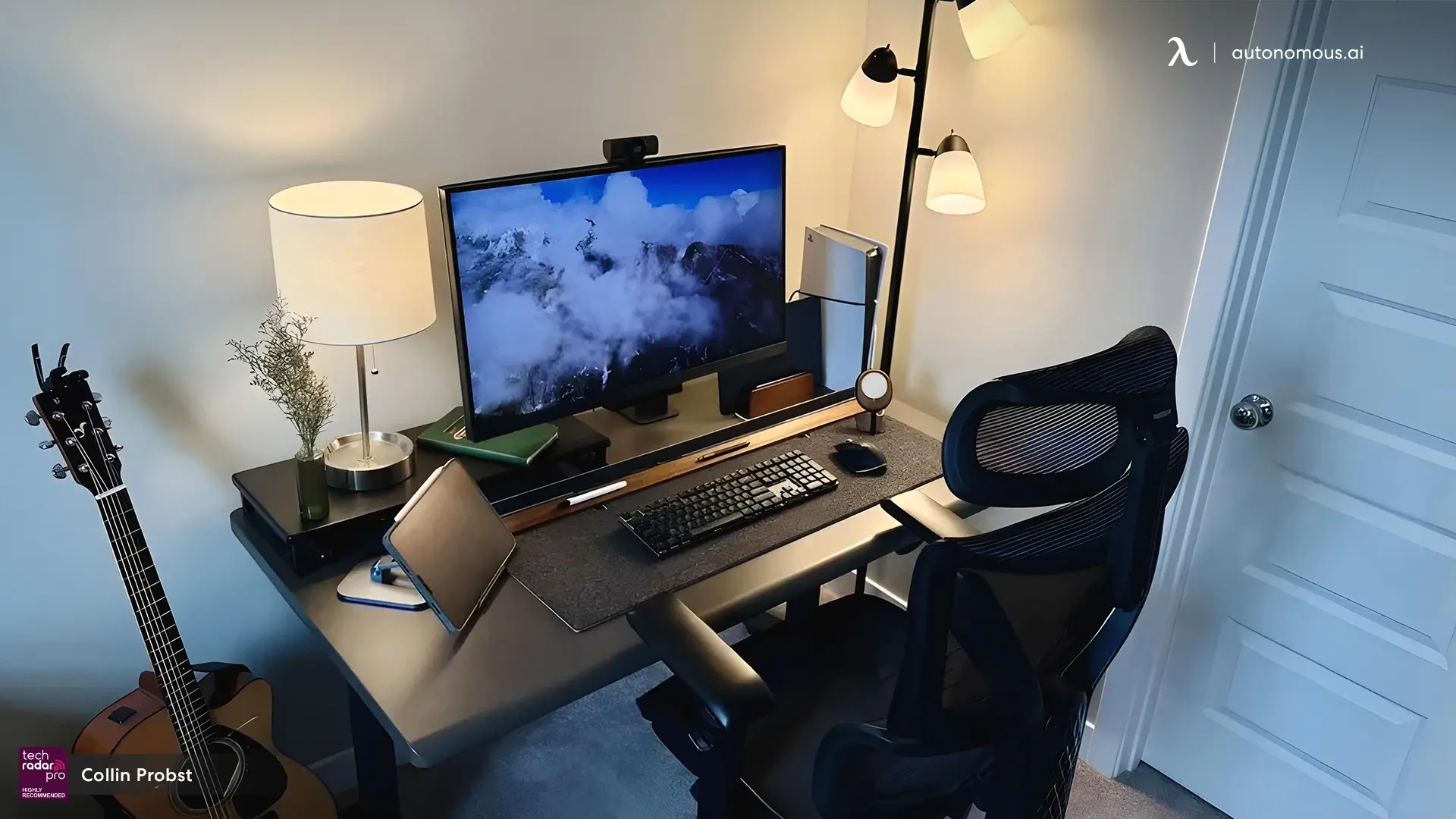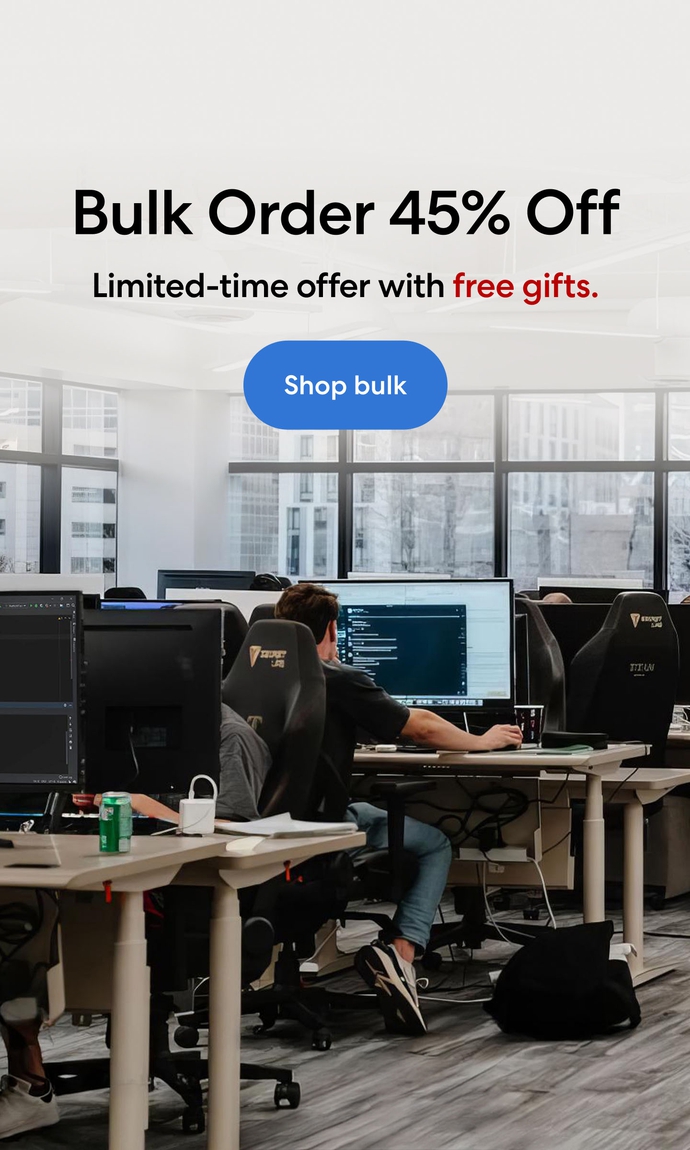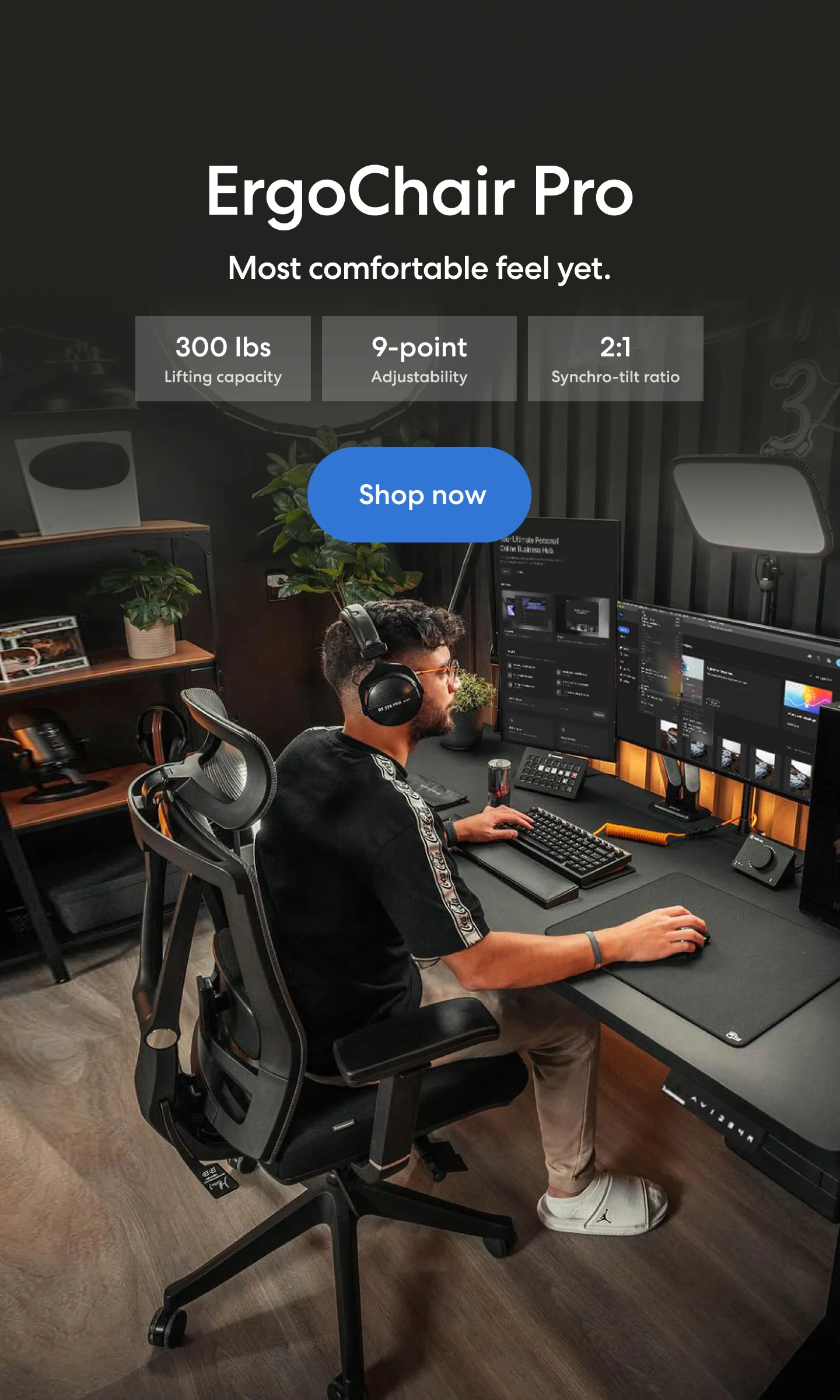
Time Tracking For Remote Workers: Best Tools & Smart Tips
Table of Contents
Time tracking for remote workers has become a crucial aspect of managing teams effectively in today's digital world. With the rise of remote work, businesses need reliable tools to ensure productivity and accountability.
From free time trackers for remote workers to advanced time tracking software, choosing the right solution can significantly improve workflow. Whether you're looking to track remote employees' hours or monitor productivity, this guide will walk you through the best time tracking tools and methods to keep your remote team on track.
Why Time Tracking for Remote Workers Is Essential
- Increase Productivity
Time tracking for remote workers plays a key role in boosting productivity. By monitoring how time is spent throughout the day, employees become more conscious of their work habits, helping them avoid office distractions.
Whether it’s limiting social media usage or staying on task during meetings, tracking time provides valuable insights into where efforts should be focused for better results. ver time, employees develop more disciplined work routines, which lead to higher efficiency and output. It also supports habits that encourage deep work, allowing employees to maintain longer stretches of focused, meaningful work.
- Ensure Accurate Billing
For freelancers and remote contractors, time tracking software is a lifesaver when it comes to accurate billing. By logging hours worked on specific tasks or projects, remote workers can ensure they’re charging clients appropriately for their time.
This not only ensures that clients are billed correctly but also helps prevent disputes. With detailed time logs, freelancers can confidently submit invoices, knowing that every hour worked is accounted for, reducing errors and improving the overall professionalism of the service. It also allows for better employee flexibility, helping workers manage their schedules effectively.

- Maintain Accountability
One of the biggest challenges of remote work is maintaining accountability. With time tracking tools, both employees and managers can keep track of how much time is being spent on various tasks.
This sense of responsibility fosters a culture of accountability, where everyone knows their tasks and time commitments. Managers can easily see if goals are being met, and employees can track their own progress, ensuring that deadlines are met and responsibilities are clear.
- Track Project Progress
Time tracking isn’t just about logging hours—it also helps with monitoring the overall progress of remote projects. By tracking time spent on individual tasks, teams can assess whether they are meeting milestones and staying on schedule.
This proactive approach makes it easier to stay on track and adjust strategies as needed to meet project deadlines, supporting a healthier work-life balance for the team.
Time tracking software for remote workers often includes reporting features that offer an overview of how projects are progressing, helping teams identify delays or bottlenecks early. This proactive approach makes it easier to stay on track and adjust strategies as needed to meet project deadlines.
Top 10 Time Tracking Tools For Remote Teams
Selecting the right time tracking tools for remote teams is crucial to enhance productivity, ensure accurate billing, and maintain accountability. Below is a curated list of 10 top-rated tools, each offering unique features tailored to various team needs.
- A Quick Glance:
Tool | Typical Starting Price¹ | Highlights |
Clockify | Free version Paid from ~$3.99/user/month (annual) | Unlimited users on Free; good for small teams starting with time tracking. |
Hubstaff | Free tier Paid plans from ~$7/user/month | Includes GPS tracking + activity monitoring — suited for remote field or mobile teams. |
Toggl Track | Free tier Paid from ~$9–10/user/month (annual) | Very user-friendly; strong integration with PM tools for remote teams. |
Connecteam | Free plan for up to ~10 users Paid from ~$29/month for 30 users (~$1/user) | Mobile-first time tracking + scheduling — good for remote/field workers. |
Harvest | Free version Paid from ~$11–14/user/month (annual) | Time tracking + invoicing blend — handy for remote freelancers/teams billing clients. |
Timely | Paid plans from ~$9/user/month (annual) | Automated time tracking with AI — less manual, more hands-free. |
Buddy Punch | Starting ~$4.49/user/month + ~$19 base/month fee | Time clock + scheduling + geofencing — suited for teams needing location verification. |
Time Doctor | Free trial Paid from ~$6.70/user/month (annual) | Deep productivity tracking (screenshots, usage) — good for remote teams needing visibility. |
TimeCamp | Free version Paid starting ~$2.99/user/month (annual) | Very budget-friendly; basic features with option to scale. |
ClickTime | Plans from ~$12/user/month (Starter) in their tiered structure | Strong for time tracking + resource / project budgeting — more suited for structured teams. |
1. Clockify
Clockify is a comprehensive time tracking tool that offers both manual and automatic time logging. Clockify allows you to track billable and non-billable hours across multiple projects and tasks, providing clear insights into where your team’s time is being spent. However, while it's robust for basic time tracking, it lacks some of the advanced features like GPS tracking or automatic task categorization that other tools offer.
Pros:
- Easy-to-use interface with one-click time tracking.
- Detailed reporting and analytics to help teams track productivity.
- Integrates seamlessly with other project management tools.
- Free plan available for small teams.
Cons:
- Lacks advanced features like screenshot capture or GPS tracking.
- Limited customization options for reporting.
- Some features are only available in the paid version.
Best For:
Clockify is best for small teams or freelancers looking for a free, straightforward time tracking tool that handles basic time management and reporting needs. It’s a great option for teams starting out or those that don't need advanced tracking features.
![]()
2. Hubstaff
Hubstaff offers a comprehensive time tracking solution that goes beyond basic time logging, with features like GPS tracking, activity monitoring, and even screenshot capture. It's particularly useful for teams that need detailed oversight of employee activities.
Pros:
- Includes GPS tracking and screenshot capture for detailed oversight.
- Integrates with many payroll and project management systems.
- Mobile app available for on-the-go time tracking.
Cons:
- Can be intrusive with its employee activity monitoring features.
- More expensive than basic time tracking tools.
- Some features require a premium plan.
Best For:
Hubstaff is best for teams that require high levels of accountability, especially for remote employees working in different locations or field-based roles. It's ideal for businesses that need comprehensive time tracking with advanced monitoring features.
3. Toggl Track
Toggl Track is a widely recognized time tracking tool favored by many remote teams for its intuitive design and powerful features.
What I appreciate most about Toggl is its simplicity—tracking time is as easy as a single click, which is ideal for teams who need to stay on top of projects without complicating the process. The app’s reporting features are another standout, offering detailed insights that help identify productivity patterns and areas for improvement.
Pros:
- Easy to use with one-click time tracking.
- Integrates with popular project management tools.
- Provides detailed productivity reports.
Cons:
- Limited features for teams needing advanced tracking (e.g., GPS, app usage).
- Advanced reporting and features are locked behind paid plans.
- Lacks activity monitoring options.
Best For:
Toggl Track is best for remote teams looking for an intuitive, no-fuss time tracking tool that focuses on task-based time logging and productivity analysis.
![]()
4. Connecteam
Connecteam is a mobile-first solution ideal for deskless workers who need time tracking on the go. In my experience, this app is incredibly effective for field workers, as it offers GPS tracking and easy time logging, even when employees are out of the office.
Beyond time tracking, Connecteam includes features for job management, scheduling, and task completion tracking, helping to streamline all aspects of remote work into one platform.
Pros:
- GPS-based time tracking for field workers.
- Mobile-first design, perfect for deskless employees.
- Job scheduling and task management features.
Cons:
- Overkill for teams that don't need mobile or GPS features.
- Some features may be unnecessary for office-based teams.
- Pricing may be high for teams that only need basic time tracking.
Best For:
Connecteam is best for remote teams with deskless or field-based employees who need an intuitive mobile-first solution for time tracking and job management.
5. Harvest
Harvest is a popular time tracking tool that excels in billing and invoicing for freelancers and remote teams. Having used Harvest with freelance clients, I’ve found it incredibly helpful in streamlining both time tracking and invoicing processes.
The integration of expense management and the ability to track billable hours makes it an all-in-one solution for remote teams working on client projects. The reporting features provide clear insights into time allocation and can easily be exported for invoicing purposes.
Pros:
- Easy tracking of billable and non-billable hours.
- Integrates with accounting tools like QuickBooks.
- Includes expense management and invoicing.
Cons:
- Limited activity tracking features like app or website usage monitoring.
- More focused on freelancers than large teams.
- Lacks some advanced reporting options.
Best For:
Harvest is best for remote teams or freelancers who need a time tracking tool with integrated billing and expense management but don’t require extensive activity monitoring features.

6. Timely
Timely uses artificial intelligence to automatically track time, categorizing tasks and projects as you work. This hands-off approach works well for teams who want to track time without having to manually start and stop timers.
However, the AI-powered system may not be ideal for teams that need precise control over time entries or specific task tracking.
Pros:
- Automatic time tracking powered by AI.
- Categorizes time spent on tasks without manual input.
- Provides detailed reports on time allocation.
Cons:
- Lacks manual time tracking options.
- AI may not always categorize time accurately.
- Can be costly compared to basic tools.
Best For:
Timely is best for remote teams who want automatic time tracking with minimal input. It's ideal for teams that prefer a hands-off approach to time tracking and want to leverage AI to track tasks and projects.
![]()
7. Buddy Punch
Buddy Punch is an easy-to-use time tracking tool that includes scheduling and payroll integration. Its geofencing feature ensures that employees can only clock in when they are within the specified work area, which is perfect for companies with remote employees working in different locations.
The tool also integrates with payroll systems, making it a comprehensive solution for businesses that need accurate time tracking and streamlined payroll processing.
Pros:
- Geofencing ensures accurate clock-ins for remote or hybrid teams.
- Employee scheduling and leave tracking.
- Integrates with payroll systems.
Cons:
- Some features may be unnecessary for fully remote teams.
- Can be more expensive for smaller teams.
- Limited reporting features compared to more specialized tools.
Best For:
Buddy Punch is best for remote teams with hybrid or deskless workers who need accurate time tracking with scheduling and payroll integration.
8. Time Doctor
Time Doctor offers in-depth productivity tracking with features like screenshot capture and website monitoring. I’ve found it useful for tracking remote employees' productivity, as it includes features like screenshots, web and app usage tracking, and even idle time monitoring.
While these features provide valuable insights into how time is spent, they may feel too invasive for some employees. The tool can be helpful for teams requiring detailed productivity analytics but may not be necessary for others.
Pros:
- Detailed monitoring of app usage, websites, and screenshots.
- Productivity reports and insights into time management.
- Tracks remote employees’ work-from-home activities.
Cons:
- Some features, like screenshots, can be intrusive.
- Expensive compared to simpler time tracking tools.
- Requires more effort to set up and manage.
Best For:
Time Doctor is best for remote teams that require detailed tracking of employee activities and productivity, especially in environments where accountability is key.
![]()
9. TimeCamp
TimeCamp is a time tracking tool that offers both manual and automatic tracking features. It offers automatic time tracking, and the ability to categorize time by project makes it simple to monitor the progress of multiple tasks at once. The integration with billing systems also makes invoicing a breeze.
Pros:
- Automatic time tracking with easy integration to other tools.
- Project and task-based time tracking.
- Detailed reporting and productivity insights.
Cons:
- Lacks in-depth activity monitoring like screenshots or app usage tracking.
- Some features require the paid plan.
- Can feel too basic for teams that need more advanced tracking.
Best For:
TimeCamp is best for teams that want automatic time tracking and basic project management without the need for complex monitoring features.
10. ClickTime
ClickTime provides time tracking, project budgeting, and resource management features, making it an ideal tool for teams managing client projects. I’ve used ClickTime for tracking both billable and non-billable hours, and it’s been invaluable for generating detailed reports on project budgets and time allocation.
However, for teams focused solely on time tracking, ClickTime might have more features than needed, which could make it feel unnecessarily complicated.
Pros:
- Combines time tracking with project budgeting and resource management.
- Provides detailed reports on time allocation and project progress.
- Integrates with payroll systems for easier processing.
Cons:
- Offers more features than basic time tracking tools, which may be unnecessary for small teams.
- Pricing may be higher for teams that only need time tracking.
- Lacks advanced employee activity monitoring.
Best For:
ClickTime is best for remote teams that need to track both time and project budgets, particularly for client-based work. It’s perfect for businesses looking for more comprehensive resource and project management features alongside time tracking.

How To Choose The Best Time Tracking Tool For Your Remote Team
Choosing the right time tracking software for remote workers depends on your team’s size, workflow, and specific needs. With so many tools available—each offering different levels of complexity, pricing, and features—it’s important to focus on what will actually help your team work more efficiently, not just what looks impressive on paper. Here are the key factors to consider when selecting a time tracking solution.
- Match The Tool To Your Team Size
The needs of a small freelance team are very different from those of a large distributed company. If your team is small, a free time tracker for remote workers like Clockify or Toggl Track might be enough. These tools focus on simplicity and ease of use, so your team can get started without a steep learning curve. Larger teams often benefit from more advanced solutions like Hubstaff or Time Doctor, which offer GPS tracking, reporting dashboards, and productivity monitoring.
- Prioritiz the Right Features
When evaluating options, it’s essential to prioritize features that match how your team works. Common features to look for include:
- Automatic time tracking for minimal manual input.
- GPS tracking if you have employees working in the field.
- Detailed reporting for analyzing productivity trends.
- Integration with project management tools for seamless workflows.
For example, Timely works well for automation, while Connecteam is strong for mobile time tracking for employees. Pairing the right time tracking tools with best productivity apps can also strengthen focus and daily output.
- Keep It Lightweight and Clear
The simpler the process, the more consistent the results. Overly complex setups can discourage team adoption. Clear time logging routines — like starting a timer at the beginning of a task or using scheduled reminders — make time tracking feel natural rather than forced.

- Use Data to Improve, Not Micromanage
Time tracking should empower your team, not create pressure. Use reports to identify trends, workload gaps, or productivity peaks. For example, spotting which projects consistently take longer than expected can help you adjust deadlines or resource allocation. This approach builds trust and reinforces time tracking as a support tool — not a surveillance mechanism.
- Provide Training and Feedback Loops
Even the most intuitive tools benefit from onboarding. Offer short training sessions or guides to help your team learn how to track their time effectively. Regular check-ins give employees a chance to share what’s working and what’s not — helping refine the process over time.
- Keep Employee Well-Being in Mind
When choosing and implementing a time tracking system, it’s important to ensure it supports—not disrupts—your team’s workflow. Tools should give employees control over their time without creating unnecessary pressure. A healthy balance between productivity and flexibility is essential for maintaining employee wellness and employee well-being, especially for remote teams managing varied schedules and workloads.
How A Good Home Office Setup Supports Time Tracking
Even with the most reliable time tracking software for remote workers, a cluttered or uncomfortable work environment can derail productivity. A thoughtfully designed home office setup helps employees stay focused, reduces distractions, and makes time tracking a natural part of their workflow rather than an extra chore.
- Ergonomics First
Comfort plays a big role in how consistently employees track and manage their time. A proper ergonomic chair with good back support, a height-adjustable standing desk, and an eye-level monitor can reduce fatigue over long work sessions.
When people feel physically at ease, they’re more likely to stay engaged during time tracking for remote work, leading to more accurate and consistent logging.
- Create a Clear Work Zone
When working from home, blurring the line between personal and professional space can hurt focus. Defining a dedicated work area — even just a corner — helps employees mentally “clock in” and “clock out” with their time tracking software for remote employees, making time logs more structured and reliable.

- Make Time Tracking Visible
Placing time tracking widgets, pinned tabs, or desktop shortcuts near the center of the workstation keeps employees aware of their active tracking sessions without switching between apps constantly. This subtle visibility improves logging accuracy and helps avoid forgotten hours or breaks.
- Lighting and Focus Matter
Good lighting and minimal noise can dramatically improve concentration. Whether it’s a desk lamp for evening work or noise-canceling headphones for busy environments, small adjustments to the setup can help employees stay focused during tracked hours.
FAQs
1. What is time tracking for remote workers?
Time tracking for remote workers refers to using software or systems to record the hours and tasks that employees working remotely spend on their jobs, helping managers monitor productivity, allocate resources, and improve workflows.
2. Why is time tracking important for remote employees?
It ensures transparency and accuracy by showing how remote employees spend their hours. With proper tracking, managers can measure productivity, plan workloads, and bill clients correctly.
3. How to track hours for remote workers?
You can track hours for remote workers using time tracking software that records when employees start and stop work, log specific tasks, and submit timesheets. Many tools offer automatic time tracking or employee time tracking with GPS to ensure accuracy, making it easier for managers to review hours and productivity in real time.
4. How does time tracking software for remote workers actually work?
These tools typically let remote workers start/stop timers, log tasks, and submit timesheets, and they often integrate with project management or payroll systems to link hours to projects or employees.
![]()
5. How much does time tracking software for remote workers cost?
Pricing varies widely — many tools offer free or low-cost plans for small teams, while more advanced solutions (with GPS tracking or heavy analytics) can cost more per user.
6. How can I track remote employees’ productivity using time tracking?
By using software that captures not just hours but activity patterns, project timelines, and task completion rates, you can analyze remote employee productivity and identify where improvements are needed.
7. How to choose the best time tracking software for remote workers?
Consider your team size, required features (GPS, mobile support, integrations), ease of use, and cost — then pilot a few options to see which fits your workflow best.
8. What should you look for when buying time tracking software for remote employees?
Look for user-friendly design, mobile compatibility, project/task integration, reporting and analytics, and responsive support; also check pricing tiers and contract flexibility.
Conclusion
Time tracking for remote workers is more than just logging hours — it’s about creating structure, accountability, and clarity in a flexible work environment. The right time tracking software for remote employees helps teams stay aligned, improves billing accuracy, and provides valuable data to optimize workflows.
But productivity isn’t just about structured time — it’s also shaped by how supported people feel at work. Integrating time tracking into a culture that values employee well-being can create a healthier, more sustainable remote work environment. Practical approaches like best employee wellness programs strengthen that foundation, helping employees stay engaged and energized over the long term.
When structure and well-being work together, time tracking becomes less about counting hours and more about enabling teams to do meaningful, focused work.
.svg)







